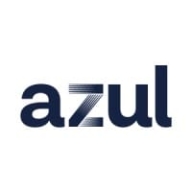

IBM WebSphere Message Broker and Azul Zing compete in enterprise messaging and Java runtime performance. IBM appears to have the upper hand in integration capabilities, while Azul excels in Java performance optimization.
Features: IBM WebSphere Message Broker offers flexible integration capabilities, protocol support, and message transformation. Azul Zing focuses on low latency with pauseless garbage collection and scalability for high-performance Java environments.
Room for Improvement: IBM WebSphere Message Broker could enhance its Java performance capabilities and reduce setup complexity. Azul Zing might improve its integration capabilities, broaden its protocol support, and consider reducing cost without compromising features.
Ease of Deployment and Customer Service: IBM provides extensive support and documentation for deploying middleware solutions, offering dedicated customer assistance. Azul Zing offers straightforward deployment and performance tuning support, emphasizing responsiveness.
Pricing and ROI: IBM involves higher setup costs but promises substantial ROI through streamlined operations. Azul Zing offers competitive pricing for performance advantages, yielding favorable ROI for those prioritizing Java application speed and efficiency.

Zing is an advanced Java runtime (JVM) designed for enterprise workloads that require any combination of large memory, high transaction rates, low latency, consistent response times or high sustained throughput. Zing eliminates Java garbage collection as a factor in production, and conforms to the Java SE standard for Java SE 8, 7, and 6.
We monitor all Application Infrastructure reviews to prevent fraudulent reviews and keep review quality high. We do not post reviews by company employees or direct competitors. We validate each review for authenticity via cross-reference with LinkedIn, and personal follow-up with the reviewer when necessary.